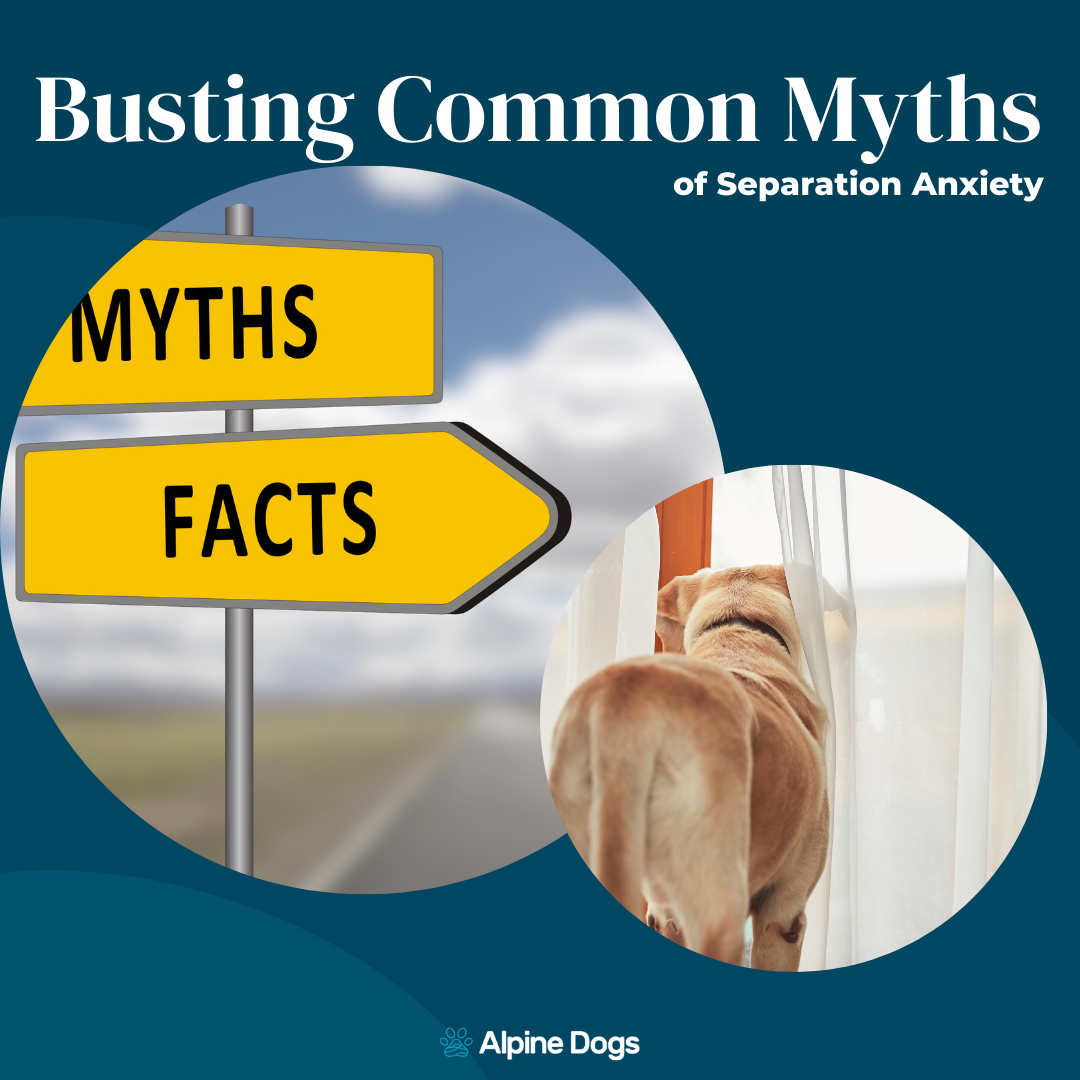The Caveat
Before I became a Certified Separation Anxiety Trainer, I started every behavior modification plan with a simple, but crucial caveat:
In order for this to work, we have to stop the rehearsal of the behaviour and/or emotion we’re trying to change.
This meant that the dog who counter-surfed had to be kept behind a gate when food was left unattended on the counters. And that dog who snapped at kids running on the playground? No playgrounds for them. Ditto for the dog who growled when someone tried to take a bone from them–they’d need to be left alone when chewing for the time being.
Clients were often confused with these directives. Understandably, they’d wonder:
“Isn’t that why we hired a trainer? We need to fix the problem, not avoid it.”
But here’s the thing. In order to modify any behaviour, we have to first prevent it from getting worse. And when the dog who puts their paws on the counter gets a loaf of bread for their efforts, you can bet that they’ll try to get to that counter more often in the future. And the dog who snaps at visitors? Each time they experience that awful feeling of fear around your guests, the negative emotion becomes stronger and stronger.
So to change the behaviour, we have to prevent it from happening in the first place. This is what we dog trainers are referring to when we talk about “management” in behaviour modification. Management = prevention.
Only then can we start to replace problem behaviours with more appropriate ones and negative emotions with more neutral or positive ones.
What This Looks Like in Separation Anxiety Training
So what is different now that I work exclusively with home-alone related issues? So much has changed, but not this piece. The first order of business in my separation anxiety training protocol is also management.
So what exactly does that look like? Well, let’s think about the behaviours that we’re trying to prevent in separation anxiety dogs–destruction, self-injury, potty accidents, etc. when left alone. How can we effectively prevent the dog from doing those things without any training? You guessed it: We have to stop leaving them alone in the first place.
This might sound easy to you because you’re already doing it. You’ve figured it out on your own. And you’re one of the lucky separation anxiety guardians who has a lifestyle that makes this doable (you work from home, you’re a stay-at-home parent, you can bring your dog to work, etc.)
But for many of you, this may seem impossible.
I am the first to admit that absence suspension can be challenging, but I’m also here to tell you that it’s not impossible. And if you are truly committed to resolving your dog’s alone-time distress, it is 100% necessary. We can’t teach your dog that being alone is safe if we keep putting them in situations that feel unsafe. They don’t just “get over it” with enough exposure; that’s unfortunately not how treating a panic disorder works.
Your dog needs to see that when you step out (or grab the door handle, or walk toward the door, etc.), you’ll be coming back before any anxiety starts. And if you’ve successfully taught your dog this over a few days but then you end up leaving your dog home alone for hours, your dog isn’t going to trust that you’ll be back and will start to panic.
Options for Suspending Absences
I know what you might be thinking:
“That all makes sense, but I work away from home. How on earth can I make this work?”
With some creative thinking, it is still possible! If your dog enjoys playing with other dogs, consider a well-run doggie daycare that can assure you that your dog will never be put in a kennel without the company of someone who makes them feel safe. Likewise, if you have neighbors with dogs who are home all day, they might enjoy having your dog there a couple days a week to keep their dog company. You can always return the favor by hosting the dogs on weekends or evenings.
There are also ever-expanding alternatives like Rover.com where sitters host smaller groups of dogs in their homes. You might also consider pitching a “Bring Your Dog to Work” day to your supervisor. If it goes well, they might even consider making the workplace open to friendly dogs more often.
If your dog isn’t into spending time with other dogs, there are still options for you. Pet sitters and dog walkers can help fill the gaps. You can also peruse local FB groups to find college students and/or retirees who are happy to spend their free time cuddled up with your dog for a reasonable fee.
And in this day and age, you’re likely to know someone who works from home. Why not ask if they’d be willing to work from your home instead? You can sweeten the deal of course in a number of ways–from providing lunches and/or sweets to paying them.
And don’t forget about family and friends who have the time! Offer to trade their sitting services for dinner that night or help with their projects. It truly does take a village and you shouldn’t be shy about calling on yours when you need them. Remember, this is temporary. As you work through a formal separation anxiety protocol, you will gradually be able to leave your dog for longer and longer durations.
In Summary
If you’re like most of my clients, you’ll need to enlist a combination of these alternatives to make it work. It really does take some out-of-the-box thinking, a commitment to the process and a whole lot of trust to effectively manage separation anxiety. But if you’ve made it to the end of this blog post, I have a feeling you have what it takes. Your dog is so lucky to have you.
